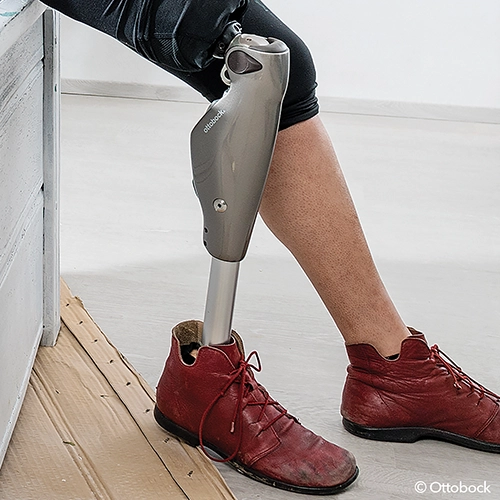
Medicare is considering a policy reform that would extend coverage for microprocessor knees (MPKs) to many K2 amputees.
Medicare currently covers MPKs only for K3 and K4 ambulators, on the theory that less mobile amputees (levels K2 and below) can’t reap the full benefits of a more advanced prosthesis. But a large body of research has accumulated over the last decade-plus to turn that premise upside-down. MPKs, the studies suggest, yield significant benefits to active K2 amputees in balance, gait stability, fall prevention, confidence, life satisfaction, and various other criteria.
K2 is a large category that includes a significant number of healthy, active senior amputees. Most of them aren’t running triathlons or working on construction sites, which is why Medicare has deemed MPKs to be unnecessarily advanced for this population. But it turns out MPKs can have a big impact for people who are simply going through the humdrum routines of everyday life—walking the dog, doing the grocery run, babysitting the grandkids, and so on. The research shows MPKs can actually help K2 ambulators function at a K3 level and become more active than they otherwise would.
By improving this population’s health and quality of life, MPKs can reduce their healthcare needs and—more to the point—their healthcare expenditures. In short, Medicare now believes it can save money by getting more K2 amputees into MPKs.
The proposed policy, which was formally introduced last week, won’t cover everyone who’s classified as K2. Would-be beneficiaries will have to establish (via medical documentation from their prosthetist, physician, rehab specialist, physical therapist, and/or other clinicians) that an MPK would contribute to fall reduction, improve overall health, and help them accomplish activities of daily living. The knee itself must have stumble-recovery functionality, and there are a handful of other must-have criteria. K2 ambulators who clear all those hurdles will automatically become eligible for a microprocessor ankle to complement the microprocessor knee.
Several more months of internal review and other procedural steps remain before the final determination gets made. If and when the policy becomes active, Amplitude will report on it in our weekly newsletter.
Top image: © Ottobock




